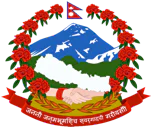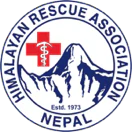Explore the world's best trekking destination with native guides
Lower Dolpo & Phoksundo Lake is an adventure around the Wild West of Nepal’s Far North West Himalayas. Following the serene trails on the old Caravan and Salt Trade Route of Nepal / Tibet. This great adventure to Lower Dolpo and Phoksundo Lake, exploring the country’s largest Shey-Phoksundo National Park.
The areas are enriched with exotic flora and fauna and the home to endangered, elusive snow leopards and herds of blue sheep.
The walk leads you in the harmony of beautiful surroundings, an adventure of a lifetime experience. Visiting around traditional villages adorned with ancient Bon (pre-Buddhist) and Tibetan Buddhist cultures of great age-old heritage.
Lower Dolpo & Phoksundo Lake starts with a scenic flight to Nepal’s Far South West at Nepalgunj city. Then connecting with another short flight to reach Jhupal, of Dolpo region.
The first part of the journey takes you to beautiful Phoksundo Lake and Ringmo village. After a wonderful time around Phoksundo Lake and Ringmo village, the return journey crossing Baga-La and Numa-La high passes. The highest point of the adventure, overlooking tremendous views of Dolpo landscapes with surrounding snow peaks.
The walk then leads to lovely Dho-Tarap village and the longest valley of Dolpo to reach back at Jhupal. After walking through the village of Tarakot and Dunai, the headquarters town of Dolpo. Then concludes our wonderful Lower Dolpo and Phoksundo Lake Treks at Jhupal. Next day, a scenic flight to Kathmandu via Nepalgunj, enjoying the excellent service of the expert guide.
The best seasons for Lower Dolpo Treks, are late spring and autumn.
Spring starts from March to May, most days are sunny but can get cloudy in the late afternoon. Chances of light snowfall with cold mornings and nighttime at above 2,000 m. The next best season is autumn/fall, which begins in September and ends in November. One of the high seasons for views and pleasant walks, sunny days most of the time in autumn. But gets dark soon, due to short sunlight hours, cold morning, and late afternoon till nighttime. Could get snowfall above 3,000 m and on Baga-La and Numa-La Passes sometimes.
The route is straightforward with a signpost at each junction of the mid-ways, so there will be no confusion. The trails are nicely laid and good for walking all the way to Lower Dolpo and Phoksundo Lake. Includes steep uphill for short hour, and with gradual winding path through lovely forest. Crossing over exciting high passes over Baga-La and Numa-La with steep downhill. Few gradual section to enjoy with touch of high altitude from Ringmo village onwards to Dho Tarap village and valley. Sometimes the walk leads to cross over landslides areas, depending upon seasons. After Tarakot the walk is downhill to Dunai then at Jhupal with some uphill.
Scenic flights to Nepalgunj city, around lower warm areas then flying to cooler hills of Dolpo. Walking on the main trail, following the normal route for few days till Ringmo village and Phoksundo Lake. The route diverts south crossing over Baga-La and Numa-La Passes. Rewards grand vista of snow-capped peaks to reach Dho Tarap Valley. The native of Lower and Inner Dolpo are the Dolpa’s, main tribes of high Dolpo and Far West Nepal with strong Buddhist heritage cultures.
Similar to their Tibetan predecessors across the borders towards north. The native and highlanders with strong bonds to the Tibetans across the border of South West Tibet. After Jhupal the country changes to dramatic landscapes with forest of blue pine, firs and spruce. The adventure takes you around Nepal’s largest Shey-Phoksundo National Park in the land of snow-leopard and blue sheep.
Day 01: Arrival in Kathmandu 1300m and transfer to hotel.
Day 02: In Kathmandu 1300m, optional tour and preparation for overland journey.
Day 03: Fly to Nepalgunj city airport 360m – 50 mins flight.
Day 04: Fly to Jhupal 2,475m, trek en-route Chhepka near Dunai-04 hrs
Day 05: Trek to Chhepka 2,838m – 04 hrs
Day 06: Trek to Samduwa village 2,960m – 06 hrs
Day 07: Trek to Ringmo Gaon 3, 733m at Phoksundo Lake – 05 hrs
Day 08: Rest day at Ringmo 3, 733m and Phoksundo Lake for local excursion.
Day 09: Trek to Timche 3,995m base of Baga-La Pass – 05 hrs
Day 10: Cross Baga-La 5,169m and trek to Danigar 4,512m – 06 hrs
Day 11: Cross over Numa-La pass 5, 190m and camp at 4,440m – 05 hrs
Day 12: Trek to Dho-Tarap 3, 944m – 05 hrs
Day 13: Trek to Gyagar 3,759m – 07 hrs
Day 14: Trek to Tarap Khola 3,652m via Chyugar 3,440 m – 06 hrs
Day 15: Trek to Tarakot 2,540m – 06 hrs
Day 16: Trek to Dunai 2,140m – 05 hour and drive to Jhupal – 02 hrs
Day 17: Fly to Kathmandu 1300m via Nepalgunj and transfer to hotel.
Breakfast, lunch, and dinner are prepared during the trek. The meals are basic, but will give you enough energy for your appetite. Fruit is also available after each meal.
During the trek, we stay in lodges or teahouses. These are simple in nature, but fully equipped. Do not expect too much luxury.
A moderate to adventurous with steep ups and downhills, one of the best and perfect walks around the Himalayas. Trekkers must be aware that Nepal and Himalayan landscapes are all ups and downhills. The only flat land is in the southern Terai belt of Nepal, walking slow and steady will overcome the difficulty.
The walk is straight forward without much difficulties, as long one takes it slow and steady. The only tough about this treks is the gain in altitude, but walking slow and having enough drinks. It is the best way as precaution against the problem of the altitude gain. Rest of the route is straightforward on daily walks to each overnights stops.
Lower Dolpo & Phoksundo Lake, is not as popular than other trekking regions, due to its remote location. Only few groups of trekkers seldom visit in the good season. The other reason is the facilities of lodge accommodation and food are not available only in few large villages. Needs to carry camping gear and food for some days.
A lovely country walk through beautiful forest lined with tall pines and fir trees. Daily views of snow peaks with local fascinating cultures of the Dolpo native, the highlanders of Western Himalayas. The major expectation besides scenic scenery is steep climb with long downhill walks. As well to experience both scenic views and local impressive cultures.
All lodges on overnight stops, have electricity facilities either run by Hydro or solar power. Trekkers can charge their electronic items on paying extra for charging each gadgets. Some lodges offer free Wi-Fi and Internet services while few places might charge extra. But the connection in some places can be disturbing and takes time to run the service either in long distance call or using the internets. But away from villages, trekkers need to carry a portable solar panel, can be slung on the back-pack for personal use.
Simple and nice rooms, wherever available that one can expect around the mountainous and hilly region around Himalayas. The lodge facilities better in Jhupal and Ringmo villages. All available lodges provide common bathe and toilets with extra charge for using hot showers. However, the rooms are neat and cozy the dining have fireplace to warm the rooms while you enjoy the meals.
The foods depending upon the standard of the lodge, but most lodge restaurants provide limited food menu. Includes few refreshments to enjoy.
But in camping our cook provides all types of meals from Continental, Chinese, Indian, Tibetan and famous Nepali Dal Bhat with mild vegetable curry. As well as good breakfast in the camping with oats porridge, loaf bread, pancakes with egg varieties.
Requires all trekkers to be suitably physically fit and in good health, to take the challenge walking steeps and downhills. When planning and booking this trip, one should need outdoor exercise from walking, jogging. Or any other good physical exercise for an hour on daily basis, and checking your health. Before booking this wonderful adventurous treks.
Shey-Phoksundo National Park the largest Park in Nepal covers an area of 2,555 sq.kms. Situated in the mountain region of western Nepal, covering parts of Dolpo and Mugu Districts. It is the largest national park in the country.
The Park contains luxuriant forests, mainly comprised of blue pine, spruce, cypress, poplar, deodar, fir and birch. The Jugdula River valley consists mostly of Quercus species. The trans-Himalayan area has a near-desert type vegetation of mainly dwarf juniper and caragana shrubs.
The park provides prime habitat for the snow leopard and the blue sheep.
Other common animals found in the park are Goral, Himalayan Thar, serow, leopard, wolf, and jackal. Himalayan black bear, Himalayan weasel, Himalayan mouse hare, yellow-throated marten, languor and rhesus monkeys.
The park is equally rich in many species of birds, such as Impeyan pheasant (Danphe), blood pheasant, cheer pheasants, red and yellow billed cough, raven, jungle crow, snow partridge and many others.
The main tribes of Dolpo people follows Tibetan Buddhism. Trekkers can witness that every houses adorned with a Buddhist prayer flags. As well prayer monuments along the trail around the villages with impressive monasteries. The Dolpo people also practice ancient Bon sect of pre Buddhism, worship of nature and mountain spirits.




